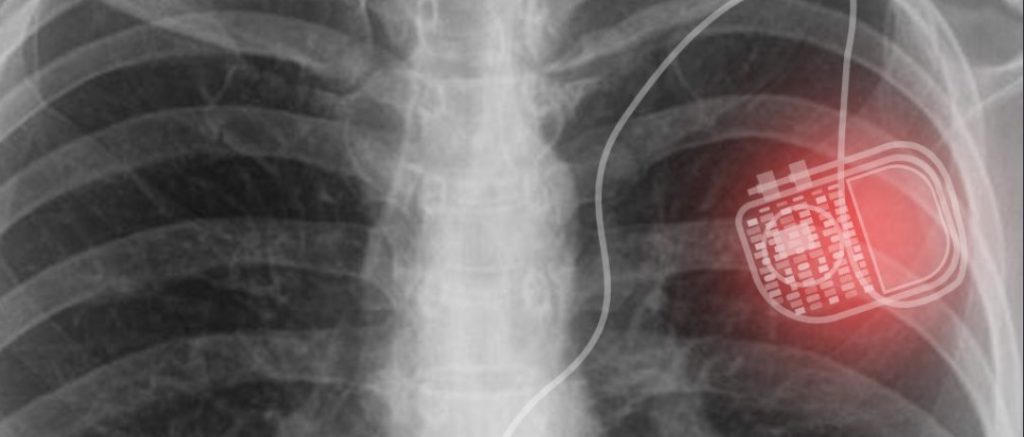What is the Difference Between Pacemakers and Defibrillators?

The heart is the most important muscle in the body—it’s the one that keeps us alive. When the heart can’t keep up due to disease, damage, or other issues, technology is available to help. Two of the most common devices associated with heart attacks, heart disease, and other heart conditions are pacemakers and defibrillators. But what are these tools, and what makes them different? How does each provide the assistance that the heart needs to continue beating (since that’s what both were designed for)?
In this blog, we’ll take a look at defibrillators and pacemakers to explain when and how they’re most commonly used and what types of patients are candidates for treatment with either device.
Defibrillators
Also known as ICDs, implantable cardioverter defibrillators are implanted devices that are designed to shock the heart to assist in restoring its rhythm to normal. They are usually prescribed for those who at risk of having life threatening arrhythmias. These devices can detect the dangerous arrhythmias and convert the rhythm back to normal using electric shock.
Anyone who is at risk from arrhythmia-induced death can benefit from an ICD, including people with cardiomyopathy, a history of cardiac arrest, severely reduced heart function, or genetic diseases like Long QT syndrome, ARVC, cardiac sarcoidosis, etc. that can cause ventricular arrhythmias (fast rhythm coming from the ventricles or the bottom chambers of the heart).
ICDs are usually implanted below the collar bone. An ICD is larger than a pacemaker and about the size of a pager. The defibrillators are used for tachycardia or fast heartbeats, but these devices can also provide dual function and serve as a pacemaker to correct issues with slow or weaker heartbeats, too.
Defibrillators include the generator along with the leads that are used to detect rhythm and deliver the appropriate shock to the heart as needed. The generator goes below the collar bone, and it houses the computer, capacitor, and the battery. The lead are wires that run through a large vein that goes to the heart so that they can deliver the shock needed to restore the rhythm. These devices offer a longer lifespan in general. For some patients they also can offer a better quality of life and longer lifespan but those do require slightly more invasive surgical methods.
Risk of procedure include infection, bleeding, and the potential for unnecessary shocks. For the most part, risks are minimal, and most people see more improvement than anything.
Pacemakers
The pacemaker is also an implanted battery-operated device, smaller than the ICDs, that assists the heart in beating at an acceptable rate. It is used for people who have a slower heart rate.
Implanting a pacemaker requires a minor surgery and a short hospital stay just like the ICDs. They can improve people’s quality of life in several ways by providing the electrical impulses the heart needs to keep the heart beating and can’t produce on its own.
The pacemaker is also implanted below the collar bone and features leads and a generator. The generator is where the information and battery are held, and the lead wires are run through a large vein that goes to the heart so that they can deliver the impulses that give the heart the reminder to beat. There are newer pacemakers available now that don’t have a lead and are referred to as “leadless” pacemakers. Leadless pacemakers are implanted directly in the heart itself and function as a complete unit.
In rare instances, infection or other complications can occur, but they are rare. Some people also worry about the interference of electronics or magnets, but again, that’s a minimal risk for the most part.
Conclusion
Ultimately, patients are best served by discussing their condition with their cardiologists to determine the right solution. Understanding the differences between these devices and the conditions they treat can help you make the most informed decision about keeping your heart (or your loved one’s) healthy and beating strong for as long as possible.
These electric devices are constantly evolving and improving, so it will likely only be a matter of time before there are even better solutions available. The heart is a strong muscle, typically, but even it is not impervious to damage and ill health as time goes on. For those with heartbeat irregularities, a pacemaker or defibrillator implant could be the solution they need to provide a better quality of life and give them a better chance of living longer.
Cardiovascular Research and Training Institute
At CVRTI, we are investigating multiple aspects related to pacing and defibrillation. We are actively investigating more efficient ways to pace patients out of dangerous arrhythmias using the highly efficient conduction system in the heart. This approach can potentially lower the chance of getting shocked, which is uncomfortable for patients. There is also active investigation exploring many different pathways to improve muscle function in heart failure using gene therapy based medicine . These novel therapeutics will lower the risk of developing dangerous cardiac arrhythmias. There is also more basic science investigation exploring genetic and molecular basis of developing heart failure and arrhythmias, with the development of intravenous therapies to stop dangerous arrhythmias as they occur.


